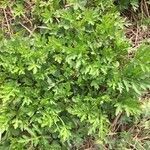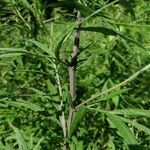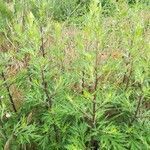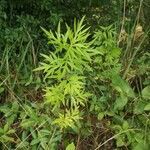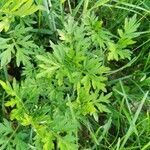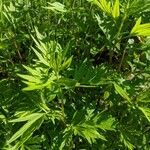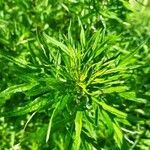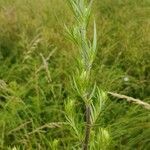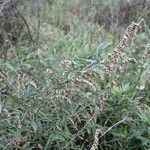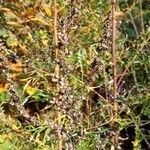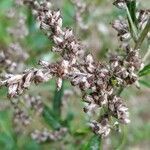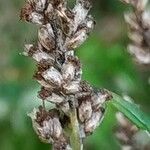Perennial, rhizomatous herbs to c. 2 m high, short-pubescent on stems and branches. Leaves mostly 1-or 2-pinnatisect, to c. 8 cm long, petiole-like basally except for small pinnatisect auricles, entire, strongly discolorous; rachides and ultimate segments usually 2–6 mm wide; primary segments 1–5 per side; upper surface glabrous or nearly so; lower surface appressed-woolly. Capitula in leafy panicles, c. 2 mm diam.; sessile or with peduncle to c. 2 mm long; involucre 2.5–4 mm long, cobwebby; bracts gradational in length; receptacle glabrous. Marginal florets c. 8–12; corolla c. 1.2 mm long. Disc florets c. 8–12; corolla c. 2.5 mm long; tube narrower than and as long as limb; limb purple. Achene of disc florets ellipsoid, c. 0.8 mm long.
A herb. It keeps growing from year to year. It can grow 1 m tall. The leaves are sword shaped and 5-13 cm long by 3-8 cm wide. They are divided into segments.
